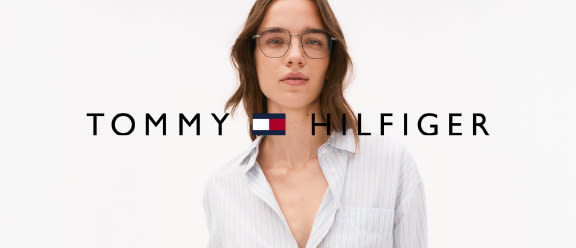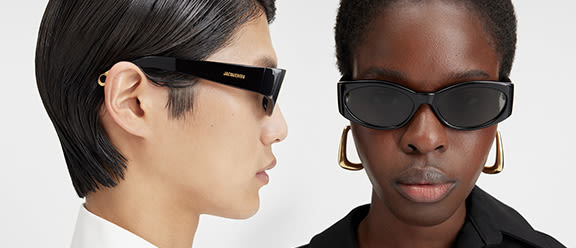Seeing clearly: choosing lenses for your glasses
After the eye test and choice of frames, it’s time to get advice on lenses. With hundreds of varieties and countless different surface finishes, there are just as many different types of lenses as there are models of glasses. This can make it difficult to keep a clear overview. Your optician will offer detailed advice and help you to make the right choice.
First off: only 10% of spectacle lenses are made of classic, mineral glass (silica), the remaining 90% are made of plastic (predominantly CR39 and polycarbonate). These have the advantage of being lighter, but also more durable and resistant to impact, light and UV-rays.
To make your choice easier, we have brought together the most important lens types, thicknesses and finishes.
Which spectacle lenses are right for me?
The basic distinction is between single vision and multifocal lenses:
Single vision lenses:
As the name suggests, single vision lenses correct just one type of sight deficiency – either short-sightedness (myopia), far-sightedness (hyperopia), or age-related sight deficiency (presbyopia) with the help of reading glasses. These lenses are used in single vision glasses.
Multifocal lenses:
Nowadays the most common types of multifocal lenses are varifocals or lenses to aid close-range vision. Bifocal and trifocal lenses are considered outdated, which is why we don’t use them.
Varifocal lenses:
Varifocal glasses are usually worn after the age of about 40. Opticians recommend them if you have to either switch between different glasses for different distances (close-range and/or far away) or frequently put on and take off your glasses.
In addition to correcting long- and/or short-sightedness, varifocal lenses also correct presbyopia and enable sharper vision, whether regarding things up close, far away or at distances in between. There is a smooth and unobtrusive transition from upper to lower when switching focus from distant to near objects. This is why nowadays varifocals are used instead of bifocal or trifocal lenses.
Close-range lenses:
Close-range lenses are used particularly for computer glasses and workplace glasses. Similar to varifocal lenses, close-range lenses allow for a smooth transition between different visual fields. However, in this case there is a greater focus on the immediate surroundings and mid-distance, which comes at the cost of longer distances. These glasses are perfectly suited to the workplace, to desk work or as hobby glasses, because they optimise vision in relation to screens and the surrounding environment.
Important point: due to the focus on close-range vision, these glasses should not be worn while driving.
Which refractive index is right for my prescription?
The higher the dioptre number, the thicker the lens – for glasses wearers with high corrective values this means that heavier lenses are used in the glasses. In the long-term this can be unpleasant for the wearer.
This is where the refractive index, which can positively influence and/or clearly reduce lens thickness, comes into play. Lenses with a high refractive index are thinner for the same corrective values than a standard lens with a refractive index of 1.5.
The refractive index
The refractive index represents how efficiently a lens can refract light. A higher index means a greater refraction of light, which is why a lens with a higher refractive index can be manufactured in a thinner form. The refractive index also depends on the lens material. With plastic it varies between 1.5 and 1.74, while mineral lenses can reach between 1.5 and 1.9. Due to its higher density, mineral glass is fundamentally thinner than plastic – but also heavier and more liable to break.


Here is an overview of refractive indices:
Refractive index 1.5
These spherical standard lenses are used to correct minor sight deficiencies up to a value of ±2.00 dioptres. They are unsuitable for higher values.
Refractive index 1.6
Lenses with a refractive index of 1.6 are used for dioptres ranging from ±2 to ±4. They are significantly thinner and about 20% lighter than standard lenses.
Refractive index 1.67
Extra thin lenses with a refractive index of 1.67. So thin that even high dioptres of between ±4 and ±6 don’t draw attention to themselves – or weigh you down, as they are about 40% lighter than the 1.5 standard lenses.
Refractive index 1.74
NEW - Super thin lenses with a refractive index of 1.74, which are up to 60% thinner and lighter than the standard version and can correct dioptres from upwards of ±6.00.
Aspheric lenses
Aspheric lenses help to improve image quality and prevent distortion at the edges of vision. With plus lenses they also have the effect that the eye size doesn’t appear greatly increased, while with minus lenses they have the opposite effect, namely that the eyes don’t appear reduced in size. Thus the eyes appear more natural. At Mister Spex lenses with a refractive index of 1.67 are aspheric as standard.
To the brand-name glassesWhich lens finishes meet my needs?
Lens finishes are special coatings on spectacle lenses. Your optician will help you find the finishes that are right for your glasses and your needs. However, there are a few finishes which nowadays are standard and are automatically included with every lens at Mister Spex.
At Mister Spex the super anti-reflection, extra hard coating and UV-filter are automatically included in every lens.
Super anti-reflection
Reduces the reflection from screens, headlights and other lights on your lenses.
Hard-coated finish
Thanks to an extra hard coating your glasses are more scratch-resistant.
Dirt-repellent coating
The lens is coated with a clear layer which makes it more dirt-repellent, but also more water- and grease-repellent. The flat surface offers no resting place for liquids and dirt particles.
Tip: Learn more about the lens quality at Mister Spex straight away or contact our team of opticians with additional questions: Information on our quality lenses.
The lotus effect
A lotus coating ensures that dirt, water and grease have great difficulty settling on the lens. The surface of the coating and the anti-static effect guarantee that you will have to clean your glasses much less often. What’s more, notably less time and effort are required to clean lotus-coated glasses.
Plastic lenses or glass lenses?
Nowadays, only about 10 percent of spectacle lenses consist of traditional, mineral glass (silica), while the remaining 90 percent are made from plastic (predominantly CR39 and polycarbonate).
Lenses made from plastic
Shatterproof and exceptionally robust
Lighter than mineral glass
Pleasant and comfortable to wear, also in sports and children’s glasses
Tints available in any colour
Lenses made from mineral glass
more scratch-resistant and, thanks to greater density, thinner than plastic
cheaper than plastic
particularly suited to multifocal glasses
Note: At Mister Spex all prescription glasses and prescription sunglasses have plastic lenses. If provided by the manufacturer, some non-prescription sunglasses have mineral lenses.
To sum up
Not all lenses are the same – get advice from your optician as to which lens is right for you. Together with a well-fitting frame it’s the key to comfortable vision.




